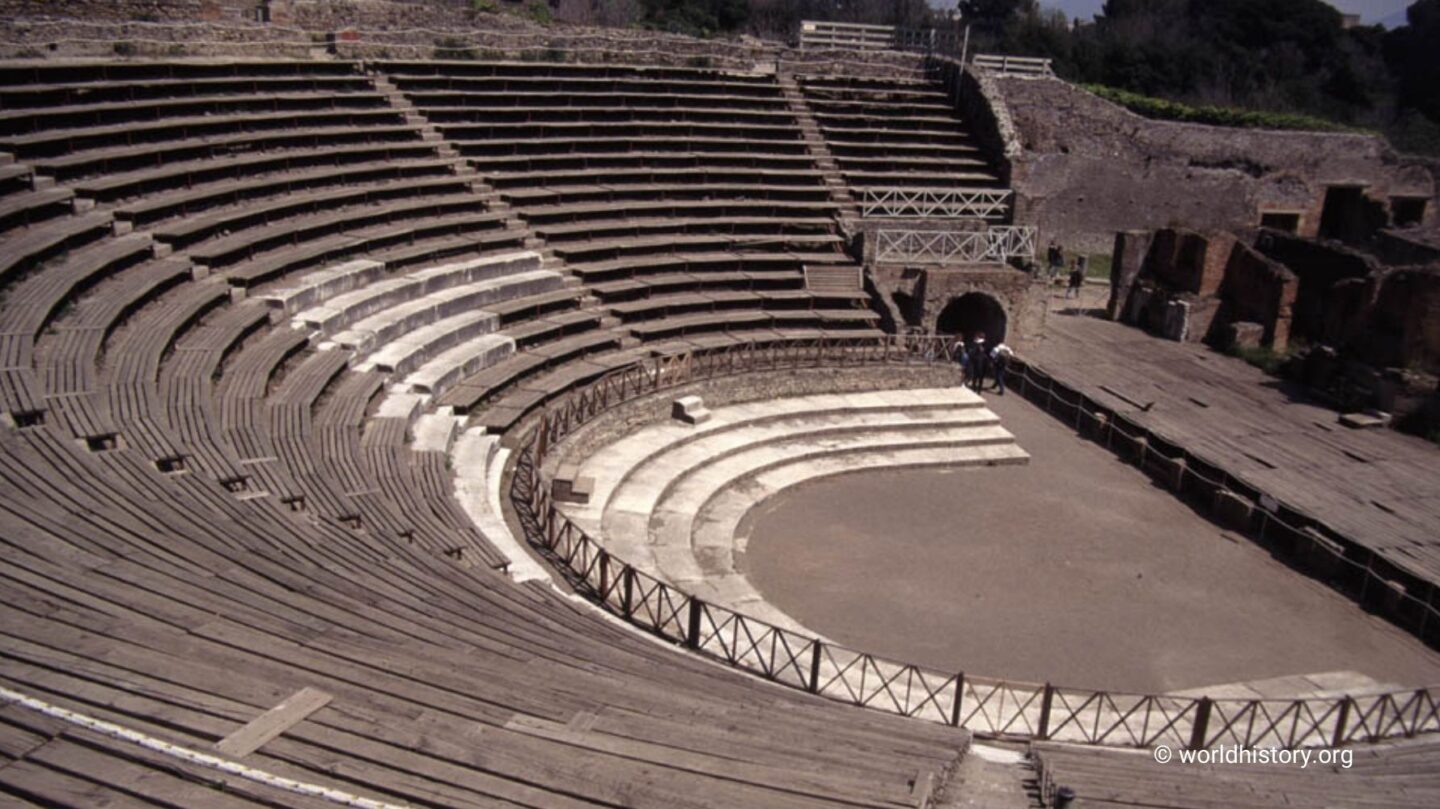A Thriving Roman City
Pompeii, located near the Bay of Naples in southern Italy, was a bustling Roman city during the first century CE. Known for its vibrant culture, wealth, and advanced infrastructure, it was home to around 11,000 residents. The city was adorned with lavish villas, bustling marketplaces, grand temples, and intricate mosaics, reflecting the prosperity of its inhabitants.
Pompeii’s streets were lined with shops, bakeries, and taverns, showcasing a thriving urban economy. Advanced engineering, such as aqueducts and public baths, highlighted the ingenuity of Roman civilization. Life in Pompeii was vibrant and full of activity—until the day Mount Vesuvius erupted.
The Day of Devastation
On August 24, 79 CE, Mount Vesuvius erupted in one of the most catastrophic volcanic events in history. The eruption began with a violent explosion, sending a massive column of ash, pumice, and gas into the sky. The wind carried ash over Pompeii, plunging the city into darkness and causing buildings to collapse under its weight.
As the eruption continued, pyroclastic flows—fast-moving surges of hot gas and volcanic material—swept through Pompeii and nearby towns like Herculaneum. These flows buried the city under layers of ash and pumice, preserving it in a state of suspended animation. Most residents were unable to escape, and the city was abandoned, its location forgotten for centuries.
Rediscovery and Archaeological Marvels
Pompeii lay hidden under meters of volcanic debris until its rediscovery in 1748. Archaeologists were astonished by the city’s state of preservation. Unlike other ancient sites, Pompeii offered an extraordinary snapshot of Roman life, frozen in time by the eruption.
Excavations revealed homes, streets, and public spaces remarkably intact. The volcanic ash had preserved everything from furniture and household items to frescoes and inscriptions. Even organic materials, like food and plants, were found in some cases. Plaster casts of the victims, created by filling voids in the ash left by decomposed bodies, provide hauntingly detailed impressions of their final moments.
Pompeii’s discovery revolutionized the study of ancient Rome, offering unprecedented insights into its urban planning, daily life, and culture.
Life in Pompeii Before the Eruption
The artifacts and structures uncovered in Pompeii reveal a city thriving with activity. Amphitheaters and public baths were centers of social life, while temples and shrines highlighted the importance of religion. Lavish villas decorated with intricate mosaics and frescoes spoke of the wealth and taste of the elite.
The graffiti etched into walls gives a personal glimpse into the lives of Pompeii’s residents, ranging from political slogans to humorous or romantic messages. These writings humanize the ancient city, reminding us that its inhabitants were not so different from ourselves.
A Grim Reminder of Nature’s Power
The eruption of Mount Vesuvius serves as a stark reminder of the destructive power of nature. Despite its beauty and cultural achievements, Pompeii was no match for the forces unleashed by the volcano. Modern geologists and volcanologists study Vesuvius extensively, as it remains an active volcano and a potential threat to the heavily populated region around Naples.
Pompeii’s Enduring Legacy
Today, Pompeii is a UNESCO World Heritage Site and one of the most visited archaeological sites in the world. Tourists flock to walk its streets and explore its preserved buildings, gaining a unique window into ancient Roman life. The tragedy of Pompeii has also inspired countless works of art, literature, and films, ensuring its place in cultural memory.
Pompeii is more than a city frozen in time—it is a testament to the fragility of human life and the enduring legacy of a civilization that continues to fascinate and educate us.
